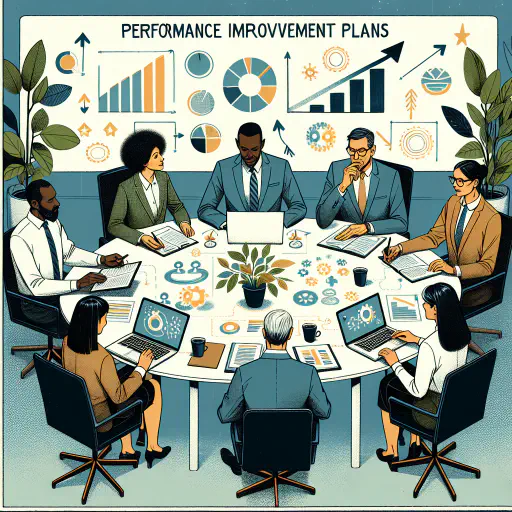
The Art of Constructive Feedback: Key to Successful PIP Implementation
Is ineffective feedback holding back your Performance Improvement Plans? Many organizations struggle with providing clear, actionable, and motivating guidance to employees during PIPs. This often stems from lack of proper training, fear of difficult conversations, or inconsistent feedback practices.
Addressing these issues is crucial for improving employee performance, fostering growth, and achieving organizational goals. In this blog, you’ll learn practical strategies for giving constructive feedback that can boost PIP success rates and enhance overall organizational performance.
1. The Importance of Effective Feedback in PIPs
Performance Improvement Plans (PIPs) are crucial tools for enhancing employee performance and achieving organizational goals. However, their success heavily relies on the quality of feedback provided during the process.
Ineffective feedback can significantly hinder the success of PIPs, leading to missed opportunities for improvement and potential employee disengagement. Many organizations struggle with this aspect, often due to lack of proper training, fear of difficult conversations, or inconsistent feedback practices.
Addressing these challenges is essential for maximizing the impact of PIPs and fostering a culture of continuous improvement within the organization.
2. Key Elements of Constructive Feedback
To provide feedback that drives positive change, consider the following elements:
- Specificity: Offer concrete examples and details rather than vague generalizations.
- Timeliness: Provide feedback as close to the observed behavior or performance as possible.
- Balance: Include both areas for improvement and recognition of strengths.
- Action-oriented: Focus on behaviors that can be changed and provide clear steps for improvement.
- Two-way communication: Encourage dialogue and listen to the employee’s perspective.
3. Overcoming Common Feedback Challenges
Many managers face obstacles when delivering feedback during PIPs. Here are strategies to address common challenges:
-
Fear of confrontation: Practice delivering feedback in a non-threatening manner, focusing on behaviors rather than personal attributes.
-
Lack of preparation: Dedicate time to gather specific examples and plan your approach before feedback sessions.
-
Inconsistency: Develop a structured feedback process and apply it consistently across all employees.
-
Unclear expectations: Clearly communicate performance standards and goals at the outset of the PIP.
4. Structuring Effective Feedback Conversations
Follow this framework to ensure your feedback conversations are productive and well-received:
-
Set the stage: Create a comfortable environment and explain the purpose of the conversation.
-
Describe the situation: Provide specific examples of the behavior or performance in question.
-
Explain the impact: Discuss how the behavior affects the team, organization, or individual goals.
-
Listen actively: Allow the employee to share their perspective and ask clarifying questions.
-
Collaborate on solutions: Work together to identify actionable steps for improvement.
-
Follow up: Schedule regular check-ins to monitor progress and provide ongoing support.
5. Leveraging Technology for Feedback Management
Utilize performance management software and feedback tools to streamline the PIP process and ensure consistency. These tools can help:
- Track progress towards goals
- Document feedback conversations
- Set reminders for follow-ups
- Provide templates for structured feedback
By incorporating technology, you can create a more efficient and effective feedback system that supports successful PIP implementation.
Now that you’ve learned the art of constructive feedback, it’s time to put these skills into action. Challenge yourself to improve your feedback techniques starting today. Pick one element of constructive feedback you’ve learned and apply it in your next interaction with an employee. Whether it’s being more specific, focusing on actionable steps, or actively listening, start small but start now.
Over the next week, try to incorporate at least three new feedback strategies into your conversations. Remember, mastering the art of feedback is a journey, not a destination. Push yourself to continually refine your approach, and watch as your PIPs become more effective and your team’s performance soars.
Are you ready to take your feedback skills to the next level?




